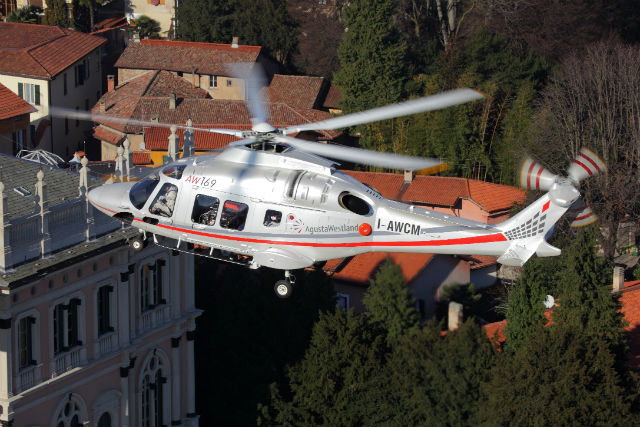Leonardo has identified unspecified issues with the production ramp-up of its new AW169 medium twin which have delayed deliveries of the 4.6t helicopter.
Detailing the first-half performance of its rotorcraft division, the Italian company says revenues declined partly because of “delayed progress in the production of the new AW169 aircraft”.
Profitably was also impacted too, it says, “by the prolonged activities for the set-up of the new AW169”.
The manufacturer obtained certification for the Pratt & Whitney Canada PW210-powered rotorcraft in July 2015 – around six months behind schedule. Flight Fleets Analyzer records just 12 AW169s in service.
In addition, a collapsing commercial market, notably in the oil and gas segment, has particularly hit demand for the AW139 and AW189 intermediate and upper-medium twins in 2016.
Overall, revenue fell 19.2% to €1.7 billion ($1.88 billion) over the same period a year earlier. Order intake was also down by 57.6% year-on-year to €958 million.

Leonardo
“The helicopter division is facing growing market challenges across the wider civil market,” says Leonardo chief executive Mauro Moretti.
However, he remains confident that contracts to be signed in the second half of 2016 from “government customers”, including Italy and the UK, will help boost order intake for the year.
In addition, he notes that the AW169 and AW189 have both continued to sell. Customers “prefer our helicopters” despite its main competitors offering aircraft of the same size and performance. Its rivals are “in a struggling situation”, he notes.
“For this we are quite positive because potentially in the pipeline there are important orders – if you consider Singapore, if you consider Poland too.”
Warsaw in April 2015 selected the Airbus Helicopters H225M for a tri-service deal, ahead of the rival AW149, although the contract has yet to be signed.
Singapore was also believed to be close to picking the H225M; however, a deal is rumoured to be on hold thanks to the grounding of the civil variant of the Super Puma.
Source: FlightGlobal.com






















